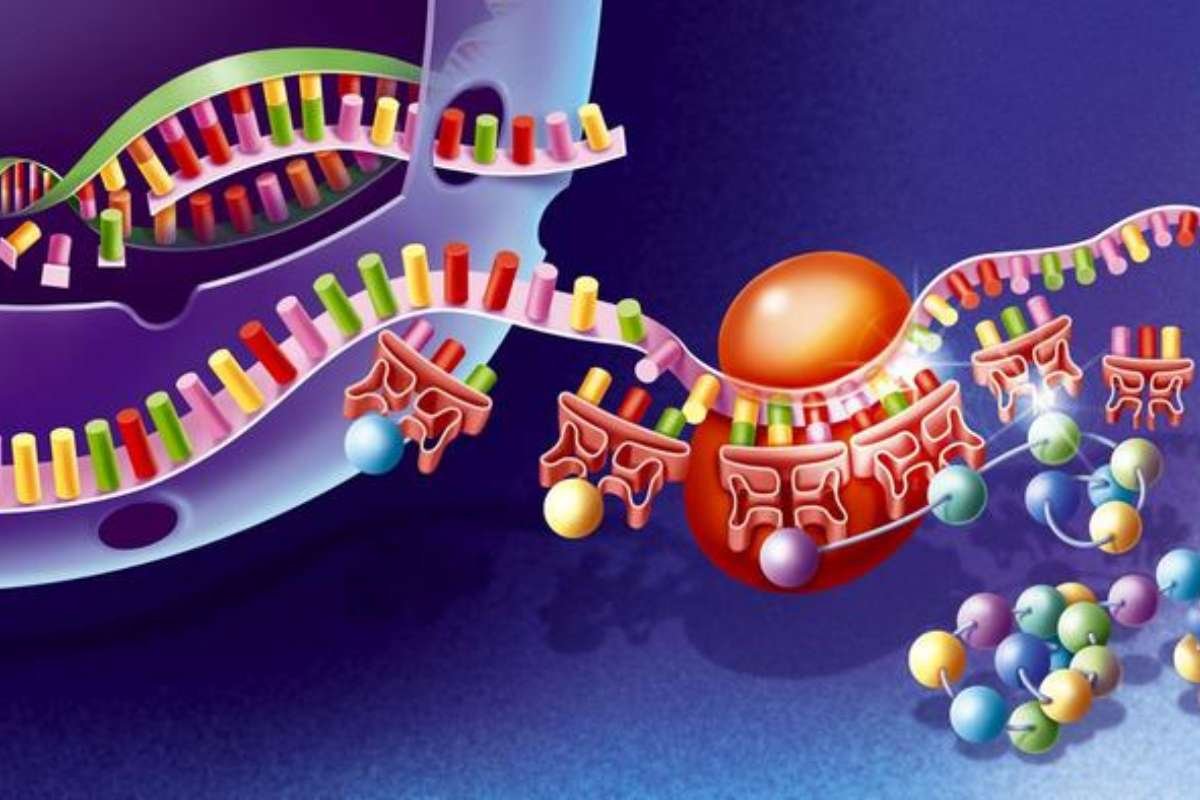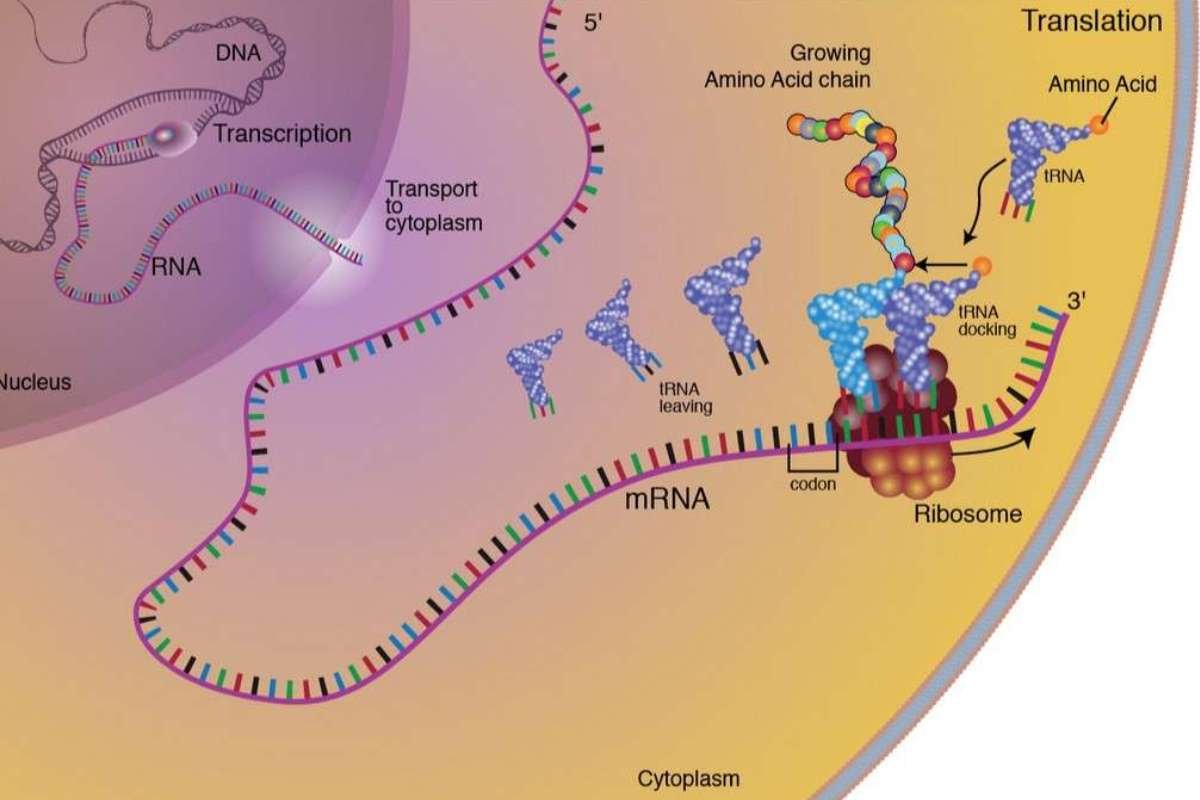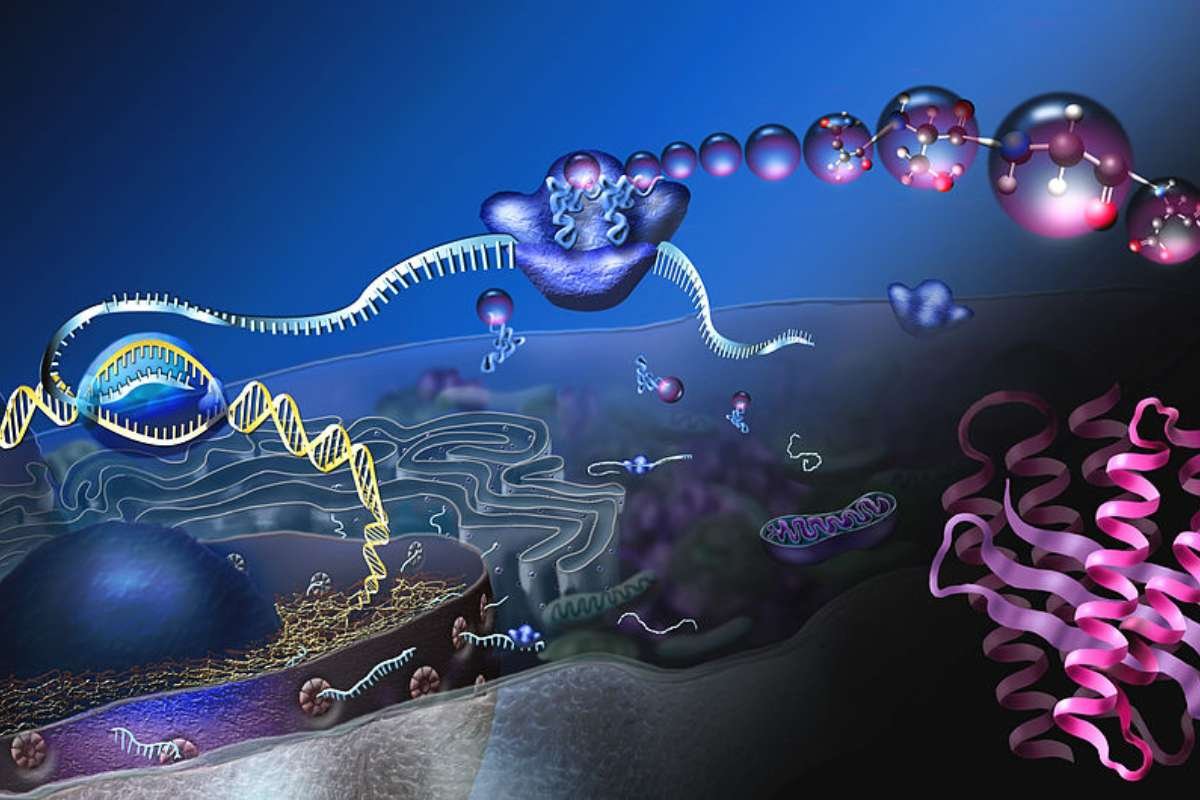Most Underrated Marvel of Biology: Steps of Protein Synthesis
Most Underrated Marvel of Biology: Steps of Protein Synthesis
Blog Article
Most Underrated Marvel of Biology: Steps of Protein Synthesis

- Source: katesalevelbiology.wordpress.com
Have you ever stopped to consider how your body, or any living organism, actually builds itself? It is not magic, but a precisely designed molecular ballet that happens trillions of times a second in every cell.
This incredible act of biological engineering, where the genetic code is transformed into the working machinery of life, is known as protein synthesis.
But how does a simple string of genetic letters transform into complex, functional proteins like enzymes, hormones, or structural components? What are the fascinating phases involved in this cellular construction process that supports all life as we know it?
Let’s get more insight about the fascinating steps of protein synthesis and learn the sophisticated dance that brings life’s essential molecules to life.
What is Protein Synthesis?
Protein synthesis is the vital process by which cells create proteins, which a molecules essential for everything from muscle growth to enzyme production. Think of it as the body’s way of building tools and machinery it needs to function properly.
In simple terms, it’s like following a recipe to make a dish. Your DNA contains the instructions, which is the recipe, and the cell uses those instructions to assemble amino acids acting as ingredients into a specific protein that is the final dish.
The Two Main Steps of Protein Synthesis:
- Transcription: DNA is used to create messenger RNA (mRNA).
- Translation: mRNA is used to assemble amino acids into a protein.
Meet the Key Players of Protein Synthesis:

1. DNA (Deoxyribonucleic Acid)
Think of DNA as the master blueprint of life. It holds the complete set of instructions your body needs to build every protein. These instructions are safely stored in the cell’s nucleus, like a recipe book locked in a library.
2. mRNA (Messenger RNA)
mRNA is the courier or messenger that delivers DNA’s instructions to the protein-building sites. After being created through transcription, it travels from the nucleus to the cytoplasm, carrying the code needed to assemble a specific protein.
3. tRNA (Transfer RNA)
tRNA acts like a delivery truck, carrying the right amino acids (the building blocks of proteins) to the ribosome. Each tRNA reads the mRNA and brings exactly the amino acid that matches the code.
4. Ribosomes
Ribosomes are the construction sites where proteins are made. They read the mRNA instructions, accept the amino acids from tRNA, and link them together like beads on a string to form a protein. They’re the hardworking machines behind the scenes, making everything happen.
Detailed Steps of Protein Synthesis:

1. Steps of Transcription
This is where the DNA’s code gets transcribed into a readable message (mRNA).
- Initiation: The process kicks off when RNA polymerase, an enzyme, attaches itself to a special region on the DNA called the promoter. It’s like opening a specific chapter in a cookbook. This signals the start of transcription.
- Elongation: RNA polymerase then reads the DNA template strand and begins building a single-stranded copy called messenger RNA (mRNA). It matches each DNA base with its RNA partner, like typing out a recipe line by line.
- Termination: Once RNA polymerase reaches a stop signal in the DNA (like the end of a recipe), it wraps up the mRNA strand and detaches. The fresh mRNA is now ready to head out for further processing.
2. mRNA Processing (in Eukaryotes)
Before the mRNA leaves the nucleus, it needs some editing and polishing, just like proofreading a draft before publishing.
- 5′ Capping: A protective cap made of methylated guanine is added to the front end (5′) of the mRNA. This helps guide the mRNA to the ribosome and shields it from enzymes that might destroy it.
- Polyadenylation: A long tail of adenine bases, also called the poly-A tail, is added to the 3′ end. This tail adds stability and helps the mRNA last longer in the cytoplasm, like giving it extra battery life.
- Splicing: Not all the information in the mRNA is useful. So the cell snips out non-coding parts called introns and stitches together the coding pieces, or exons, to form a clean, readable message.
3. Steps of Translation
This is where the mRNA message is translated into an actual protein.
- Initiation: The processed mRNA travels to a ribosome, which locks onto it like a docking station. The ribosome scans for the start codon (AUG), the green light signaling that it’s time to begin building a protein.
- Elongation: One by one, tRNA molecules bring the correct amino acids to the ribosome. The ribosome links these amino acids together into a growing peptide chain, following the exact order spelled out by the mRNA. It’s like assembling beads to make a specific bracelet pattern.
- Termination: When the ribosome hits a stop codon, translation ends. The finished protein is released, ready to fold into its final shape and get to work in the cell!
What happens after a Protein is made? (PTMs, Visualization & Regulation):

- Post-translational modifications (PTMs) — Key changes like phosphorylation, glycosylation, acetylation, methylation, and proteolytic cleavage ensure proteins fold correctly, function properly, find the right cellular location, and maintain stability.
- Real-time visualization of gene expression — Cutting-edge tools such as fluorescent/luminescent reporters (e.g., GFP, luciferase), Fluorescence In Situ Hybridization (FISH), live-cell imaging with MS2/MCP tagging, and single-molecule RNA sequencing reveal gene activity dynamically at both cellular and molecular levels.
- Multi-layered gene expression regulation — Controlled at every stage:
- Transcriptional: Through promoters, enhancers, transcription factors, and epigenetic marks that turn genes on or off.
- Post-transcriptional: Via RNA interference pathways (microRNAs, siRNAs), fine-tuning mRNA stability and translation.
- Translational: By modulating initiation factors and ribosomal activity to adjust protein synthesis rates.
- Post-translational: Through protein degradation systems like ubiquitin-proteasome and autophagy, which balance protein levels as needed.
Also Read: The Unseen Symphony: Unveiling the Magic of DNA Replication
Conclusion
Understanding the steps of protein synthesis is vital for grasping how our cells function and maintain life.
From the beginner level, where we explored the basic roles of DNA, mRNA, and ribosomes, to the intermediate and advanced stages detailing transcription, translation, and post-translational modifications, each step plays a vital role in building the proteins our bodies rely on.
These processes not only underpin growth and repair but also influence our health at the molecular level. Errors in protein synthesis can lead to serious diseases.
By mastering the steps of protein synthesis, we gain insight into one of biology’s most essential mechanisms.
FAQ:
1. What are the 4 processes of protein synthesis?
Protein synthesis is the process by which cells make proteins. It occurs in two stages: transcription and translation. Transcription is the transfer of genetic instructions in DNA to mRNA in the nucleus. It includes three steps: initiation, elongation, and termination.
2. What are the 6 steps of translation and protein synthesis?
Translation in biology consists of six steps: initiation, tRNA elongation, amino acid bonding, mRNA shift and release, arrival of the next tRNA, and termination. This process converts mRNA sequences into proteins.
3. What are the 4 stages of protein formation?
The four levels of protein structure are primary, secondary, tertiary, and quaternary. It is helpful to understand the nature and function of each level of protein structure to fully understand how a protein works.